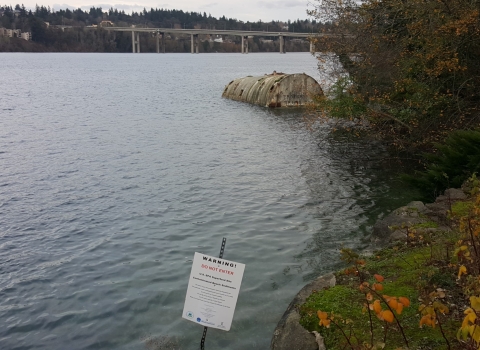Carlsbad, Calif. – The coastal California gnatcatcher (Polioptila californica californica), a subspecies of the California gnatcatcher (Polioptila californica) does not warrant removal from protection under the Endangered Species Act (ESA).
Today’s announcement is in response to a 2014 petition from the Pacific Legal Foundation to delist the coastal California gnatcatcher due to error. The petition asserted that based on new information presented in a 2013 published paper by Robert Zink and others, the coastal California gnatcatcher cannot be distinguished taxonomically from other California gnatcatchers and, therefore, is not a listable entity under the ESA.
In December 2014, a 90-day finding was published in the Federal Register, indicating the petitioned action may be warranted and a status review was initiated. Based upon the best available scientific information, the Service determined the petitioned action is not warranted.
The 12-month finding may be viewed today at the Federal Register Reading Room and will officially publish on Aug. 31, 2016. All documents and supporting information for the 12-month finding will be available online at www.regulations.gov. In the search box enter Docket No. FWS–R8–ES–2014-0058 and click the “Search” button.
As part of the status review, the Service contracted with Amec Foster Wheeler to convene a panel of six independent, qualified scientists to review the information presented in the petition, along with other relevant information. The scientists were selected without input from the Service, but all have experience and expertise in the fields of molecular genetics, avian conservation genetics, avian systematics, conservation genetics, population genetics and avian molecular genetics.
The six scientists assessed the 2013 Zink et al. paper; other scientific literature pertaining to taxonomy of the coastal California gnatcatcher, including ecology, morphology, genetics and behavior; and information received during the comment period that followed the publication of the 90-day petition finding. Their individual reports were reviewed by the Service.
Individual panelists and others that submitted comments on the 90-day finding pointed to weaknesses in the Zink et al. 2013 paper. Among the primary weaknesses of the research conducted by Zink et al. 2013 were the selection of genetic markers and lack of hypothesis testing. Specifically, the type of loci and analyses were not suited to identifying recent, intraspecific divergence. Panelists also indicated that a full suite of characteristics must be considered when looking at distinguishability of subspecies, including: morphology, ecological setting and genetic analysis.
Information obtained since a 2010 5-Year Review of the subspecies’ status was also reviewed, and the Service determined the coastal California gnatcatcher should remain listed as threatened under the ESA.
Primary stressors on this subspecies include wildfire and vegetation type conversation of its native coastal sage scrub habitat to nonnative grassland which is not suitable for the bird. The subspecies also faces threats from grazing, fragmentation of its habitat, and climate change climate change
Climate change includes both global warming driven by human-induced emissions of greenhouse gases and the resulting large-scale shifts in weather patterns. Though there have been previous periods of climatic change, since the mid-20th century humans have had an unprecedented impact on Earth's climate system and caused change on a global scale.
Learn more about climate change effects.
Although the panelists provided the Service with their individual analyses of the 2013 Zink et al. paper and other scientific information regarding taxonomy of the coastal California gnatcatcher, they were not asked to render individual recommendations regarding a delisting determination, nor were they asked to form a consensus regarding a delisting determination.
The mission of the U.S. Fish and Wildlife Service is working with others to conserve, protect, and enhance fish, wildlife, plants, and their habitats for the continuing benefit of the American people. We are both a leader and trusted partner in fish and wildlife conservation, known for our scientific excellence, stewardship of lands and natural resources, dedicated professionals, and commitment to public service. For more information on our work and the people who make it happen, visit http://www.fws.gov/cno. Connect with our Facebook page, follow our tweets, watch our YouTube Channel, and download photos from our Flickr page.
-FWS-

